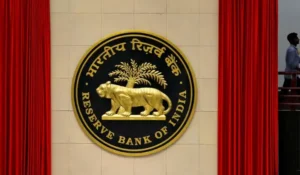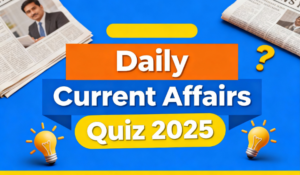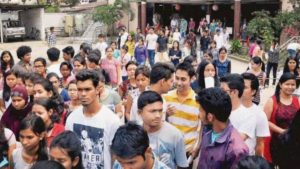Direction (1-3): Study the following information carefully and answer the given questions.
There are nine members in a family i.e. P, Q, R, S, T, U, V, M, and W. Among them only two married couples and only four males are there. R is married to P. Q is the only child of S. U is married and she has a mother-in-law. M has a child. S is paternal grandmother of T and T is uncle of W. P is father of T’s mother and V. M is not a female member of a family.
Q1. How is W related to T’s brother?
Q2. How is S related to V’s sister?
Q3. Who is grandfather of child of M?
Q4. Sneha started from her home to office. She started towards east direction. After walking for 4m she turned to her left and walked 8m, now she turned left and walked 2m. After this she turned to right walked 4m. Now after turning to her right she walked 13m and reached office. Find the shortest distance between her office and home.
Q5. From his house, Ankit walks 15 km to the north. Then he turns west and covered 20 km. Then he turns south and covered 5 km. Finally turning to east, he covers 25 km. In which direction is he from his house?
Direction (6-10): Study the following information to answer the given questions.
L, K, G, F, E, A, I and Z are eight friends who are sitting in a straight line but not necessarily in the same order. Some of them are facing south while some are facing north.
L sits fourth to left of A. A sits at one of the extreme ends of the line. Both the immediate neighbours of L face north. K sits second to left of Z. Z is not an immediate neighbor of L. Neither Z nor G sits at the extreme end of the line. G faces opposite direction to F. Both the immediate neighbors of G face north. E sits second to the left of I. Immediate neighbours of F face opposite directions (i.e. if one neighbour of F faces North then the other faces South and vice-versa). Immediate neighbours of K face opposite directions (i.e., if one neighbor of K faces North then the other faces South and vice-versa). People sitting at the extreme ends face the opposite directions (i.e., if one person faces North then the other faces South and vice-versa). F faces to south direction. E does not sit near to L.
Q6. Which of the following pairs represents immediate neighbours of the persons seated at the two extreme ends of the line?
Case 1- When A faces south, both the immediate neighbours of L face north. K sits second to left of Z. Z is not an immediate neighbor of L. People sitting at the extreme ends face the opposite directions. Neither Z nor G sits at the extreme end of the line so Z sits immediate left to A and faces south. G faces opposite direction to F. Both the immediate neighbors of G face north. Immediate neighbours of F face opposite directions. Immediate neighbours of K face opposite directions. F faces to south direction so F sits immediate left to Z.E sits second to the left of I so G sits second to the right to L but it is given that E does not sit near to L so this case will be eliminated.
Case 2- When A faces north, both the immediate neighbours of L face north. K sits second to left of Z. Z is not an immediate neighbor of L. People sitting at the extreme ends face the opposite directions. Neither Z nor G sits at the extreme end of the line so Z sits immediate left to A and faces north. G faces opposite direction to F. Both the immediate neighbors of G face north. Immediate neighbours of F face opposite directions. Immediate neighbours of K face opposite directions. F faces to south direction so F sits immediate left to E.E sits second to the left of I so G sits second to the left to A.L faces south, so the final arrangement is-
Q7. How many person are seated between K and A?
Case 1- When A faces south, both the immediate neighbours of L face north. K sits second to left of Z. Z is not an immediate neighbor of L. People sitting at the extreme ends face the opposite directions. Neither Z nor G sits at the extreme end of the line so Z sits immediate left to A and faces south. G faces opposite direction to F. Both the immediate neighbors of G face north. Immediate neighbours of F face opposite directions. Immediate neighbours of K face opposite directions. F faces to south direction so F sits immediate left to Z.E sits second to the left of I so G sits second to the right to L but it is given that E does not sit near to L so this case will be eliminated.
Case 2- When A faces north, both the immediate neighbours of L face north. K sits second to left of Z. Z is not an immediate neighbor of L. People sitting at the extreme ends face the opposite directions. Neither Z nor G sits at the extreme end of the line so Z sits immediate left to A and faces north. G faces opposite direction to F. Both the immediate neighbors of G face north. Immediate neighbours of F face opposite directions. Immediate neighbours of K face opposite directions. F faces to south direction so F sits immediate left to E.E sits second to the left of I so G sits second to the left to A.L faces south, so the final arrangement is-
Q8. If each of the persons is made to sit in alphabetical order from right to left the positions of how many will remain unchanged as compared to the original seating arrangement?
Case 1- When A faces south, both the immediate neighbours of L face north. K sits second to left of Z. Z is not an immediate neighbor of L. People sitting at the extreme ends face the opposite directions. Neither Z nor G sits at the extreme end of the line so Z sits immediate left to A and faces south. G faces opposite direction to F. Both the immediate neighbors of G face north. Immediate neighbours of F face opposite directions. Immediate neighbours of K face opposite directions. F faces to south direction so F sits immediate left to Z.E sits second to the left of I so G sits second to the right to L but it is given that E does not sit near to L so this case will be eliminated.
Case 2- When A faces north, both the immediate neighbours of L face north. K sits second to left of Z. Z is not an immediate neighbor of L. People sitting at the extreme ends face the opposite directions. Neither Z nor G sits at the extreme end of the line so Z sits immediate left to A and faces north. G faces opposite direction to F. Both the immediate neighbors of G face north. Immediate neighbours of F face opposite directions. Immediate neighbours of K face opposite directions. F faces to south direction so F sits immediate left to E.E sits second to the left of I so G sits second to the left to A.L faces south, so the final arrangement is-
Q9. Who amongst the following sits exactly between I and K?
Case 1- When A faces south, both the immediate neighbours of L face north. K sits second to left of Z. Z is not an immediate neighbor of L. People sitting at the extreme ends face the opposite directions. Neither Z nor G sits at the extreme end of the line so Z sits immediate left to A and faces south. G faces opposite direction to F. Both the immediate neighbors of G face north. Immediate neighbours of F face opposite directions. Immediate neighbours of K face opposite directions. F faces to south direction so F sits immediate left to Z.E sits second to the left of I so G sits second to the right to L but it is given that E does not sit near to L so this case will be eliminated.
Case 2- When A faces north, both the immediate neighbours of L face north. K sits second to left of Z. Z is not an immediate neighbor of L. People sitting at the extreme ends face the opposite directions. Neither Z nor G sits at the extreme end of the line so Z sits immediate left to A and faces north. G faces opposite direction to F. Both the immediate neighbors of G face north. Immediate neighbours of F face opposite directions. Immediate neighbours of K face opposite directions. F faces to south direction so F sits immediate left to E.E sits second to the left of I so G sits second to the left to A.L faces south, so the final arrangement is-
Q10. Who amongst the following sit third to the left of G?
Case 1- When A faces south, both the immediate neighbours of L face north. K sits second to left of Z. Z is not an immediate neighbor of L. People sitting at the extreme ends face the opposite directions. Neither Z nor G sits at the extreme end of the line so Z sits immediate left to A and faces south. G faces opposite direction to F. Both the immediate neighbors of G face north. Immediate neighbours of F face opposite directions. Immediate neighbours of K face opposite directions. F faces to south direction so F sits immediate left to Z.E sits second to the left of I so G sits second to the right to L but it is given that E does not sit near to L so this case will be eliminated.
Case 2- When A faces north, both the immediate neighbours of L face north. K sits second to left of Z. Z is not an immediate neighbor of L. People sitting at the extreme ends face the opposite directions. Neither Z nor G sits at the extreme end of the line so Z sits immediate left to A and faces north. G faces opposite direction to F. Both the immediate neighbors of G face north. Immediate neighbours of F face opposite directions. Immediate neighbours of K face opposite directions. F faces to south direction so F sits immediate left to E.E sits second to the left of I so G sits second to the left to A.L faces south, so the final arrangement is-
Directions (11-15): In these questions, relationship between different elements is shown in the statements. The statements are followed by conclusions. Study the conclusions based on the given statements and select the appropriate answer. Give answer-
Q11. Statements:
J<O=B>M, A>Q<J, I≤M.
II. O>I (True)
Q12. Statements:
S<Z, R≥C≤Z, Q>S, C>K.
R>Q (False)
II. K<R (True)
Q13. Statements:
Q>M, J=R, J<Q>S≤A
II. R≤M (False)
Q14. Statements:
D≥M>N, Z>D≥R, A>C<R
C<D
N<Z (True)
Q15. Statements:
A≥R,
J<A, B>T≥R
J>R
B<R (False)
II. J>R (False)
You may also like to Read:







 RBI Lateral Recruitment 2026 Notificatio...
RBI Lateral Recruitment 2026 Notificatio...
 Daily Current Affairs Quiz 27 December 2...
Daily Current Affairs Quiz 27 December 2...
 IBPS RRB PO Mains Exam Analysis 2025, Al...
IBPS RRB PO Mains Exam Analysis 2025, Al...








